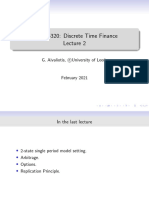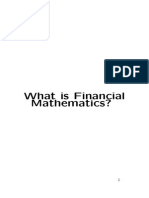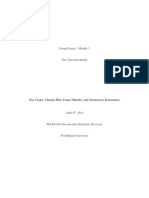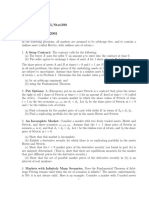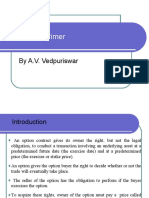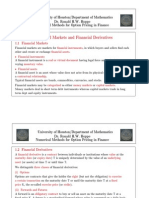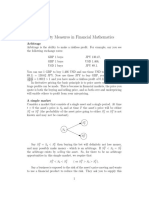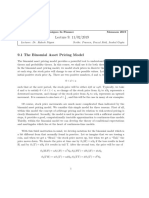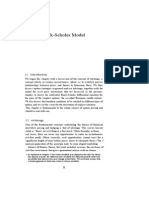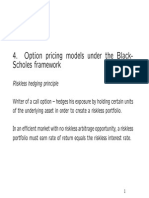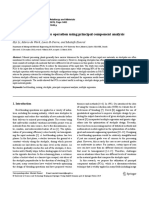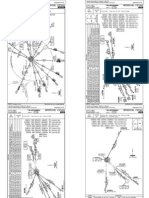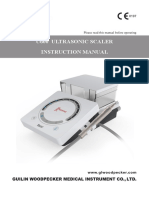0% found this document useful (0 votes)
25 views44 pagesOutput 4
The document discusses European call options, which give the buyer the right to purchase equity at a predetermined strike price at expiration, without obligation to exercise. It also covers the valuation of these options in a two-scenario market, emphasizing the conditions for arbitrage-free pricing and the existence of risk-neutral measures. The fundamental theorem of asset pricing is presented, stating that a market is arbitrage-free if there exists a risk-neutral probability measure.
Uploaded by
Чан С ВодойCopyright
© © All Rights Reserved
We take content rights seriously. If you suspect this is your content, claim it here.
Available Formats
Download as PDF, TXT or read online on Scribd
0% found this document useful (0 votes)
25 views44 pagesOutput 4
The document discusses European call options, which give the buyer the right to purchase equity at a predetermined strike price at expiration, without obligation to exercise. It also covers the valuation of these options in a two-scenario market, emphasizing the conditions for arbitrage-free pricing and the existence of risk-neutral measures. The fundamental theorem of asset pricing is presented, stating that a market is arbitrage-free if there exists a risk-neutral probability measure.
Uploaded by
Чан С ВодойCopyright
© © All Rights Reserved
We take content rights seriously. If you suspect this is your content, claim it here.
Available Formats
Download as PDF, TXT or read online on Scribd
/ 44








